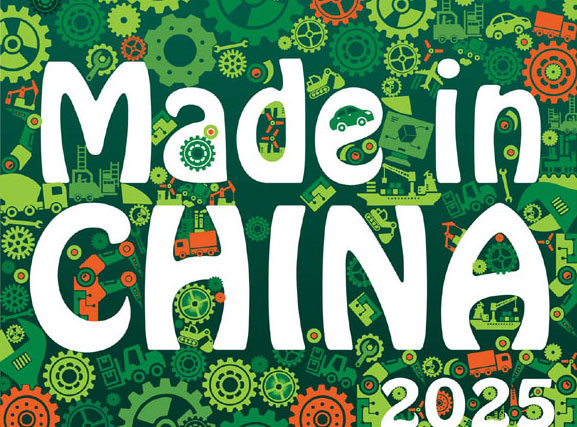State of the art
Updated: 2015-09-25 07:59
By Riazat Butt(China Daily Europe)
|
|||||||||||

"There's not too much to lose. People are more optimistic. They want to know more about art and they want to experience it in a new way. We are being encouraged to try new things. There is an emerging generation of very active female collectors in China. It's not as simple as saying young people are buying young art. They are interested in special provenance and the interesting story behind it, if the piece belonged to an interesting collector. They want to understand a specific piece of art and its value."
To this end auction houses are wooing Chinese buyers through experiences rather than catalogues alone. These initiatives, as well as being informative and educational, also nurture allegiances and relationships with Chinese collectors who might otherwise be drawn to the two domestic auction behemoths, Poly and Guardian, themselves a force to be reckoned with when it comes to Chinese classical and contemporary art.
In May last year Christie's invited 18 new Chinese collectors to New York. The itinerary included a guided tour to the city's Museum of Modern Art and VIP tickets to an art fair.
"The Chinese want to understand a specific piece of art and its value. They are getting more sophisticated. They want exchanges and interaction with the outside world," says Cai.
That same month Sotheby's Beijing held its second spring sale and selling exhibition. It was supported by talks and lectures to target the diverse collectors in China. At the time, Larry Zhu, Sotheby's Asia chief operating officer, said art education would play a fundamental role in the market's future development. Sales in China would bring previously unavailable and prestigious works to the country, and educational events would increase knowledge about these works and inform the market, he says.
Wang Zhongjun, chairman and cofounder of entertainment giant Huayi Brothers Media Group, gave an interview to Sotheby's in May. It provided insight into the evolution of a Chinese art collector. Wang bought a Van Gogh for $61.8 million in November and says that 10 years ago he could not have dreamed of buying such a work. His initial purchases took place from 1998, when he made his fortune, and included Chinese contemporary and classical artists such as Luo Zhongli, Ai Xuan, Wu Guanzhong and Fang Lijun.
The Van Gogh, the movie tycoon says, was a higher-priced and very important "museum-quality" painting. The name, together with the rare-to-market nature of the piece, presented him with an opportunity. "I don't buy paintings every year - at this level, it's impossible to be too whimsical about it, unless I were to have more money. I am not yet at that level."
Wang Zhongjun, who is worth about $1.26 billion, bought a $29.9 million Picasso in May. The painting was in the collection of film producer Samuel Goldwyn Jr. In a statement after the Picasso purchase he says: "I first fell in love with the painting and then I fell in love with its story. The Goldwyn family is legendary in our industry."
There are parallels between China's luxury market and its art market. Both have experienced stratospheric growth over a short time, and a lull in activity does not necessarily point to an impending collapse or a loss of interest. "As the Chinese market has become more mature, collectors have refined their tastes and are now more discerning about what they want to buy and how much they are prepared to pay for them," says Sheaf, of Bonhams. "This is normal with any maturing market."
Larry Warsh, a New York art collector and publisher with a specific focus on Chinese contemporary art, warns against ghettoizing the Chinese art market, saying it is like any other.
"The financial crisis in general works both ways. It's not China specific. If you look at Dow drops in the last 10 or 15 years, the art market booms when the stock market is down. It creates a sense of insecurity and it creates a safe haven for commodities like gold and art. It also makes people need to sell quicker. Art is a great way to hold on to assets."
He rejects the idea that the country's financial problems will cause the Chinese to flee the art market and cause it to crash just as the Japanese one did more than 25 years ago, when Japanese collectors smashed records at auctions and then exited the art market when their economy imploded. The art market is bigger than it was in 1990, he argues, and there is more money in a greater number of regions.
"Japan doesn't have the scale of the Chinese art market, but there was a lot of bad buying in the 1980s. Wealth will support the Chinese art market, and there is enough wealth to support the art available. There is trophy buying in China but that doesn't mean it's not good buying or good collecting."
Confidence and education will make the market thrive, he says. "That will happen through the billionaires' children. I think they will add to the power of China. Stanley Ho has a big family. His daughter, Angelo Ho, started buying Keith Haring. But money is far better spent by Chinese collectors on Chinese art, which is still undervalued."
riazat@chinadaily.com.cn
Today's Top News
Saudi king orders probe as death toll set to rise
China willing to cooperate with US on cybersecurity
New economy drives growth
Hundreds killed in Saudi Hajj stampede
Volkswagen to pick Porsche boss as new CEO
EU leaders claim unity regained, pledge aid for Syrians
Business leaders, experts applaud Xi's speech in Seattle
Premier encourages innovation
Hot Topics
Lunar probe , China growth forecasts, Emission rules get tougher, China seen through 'colored lens', International board,
Editor's Picks

|

|

|

|

|

|






